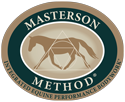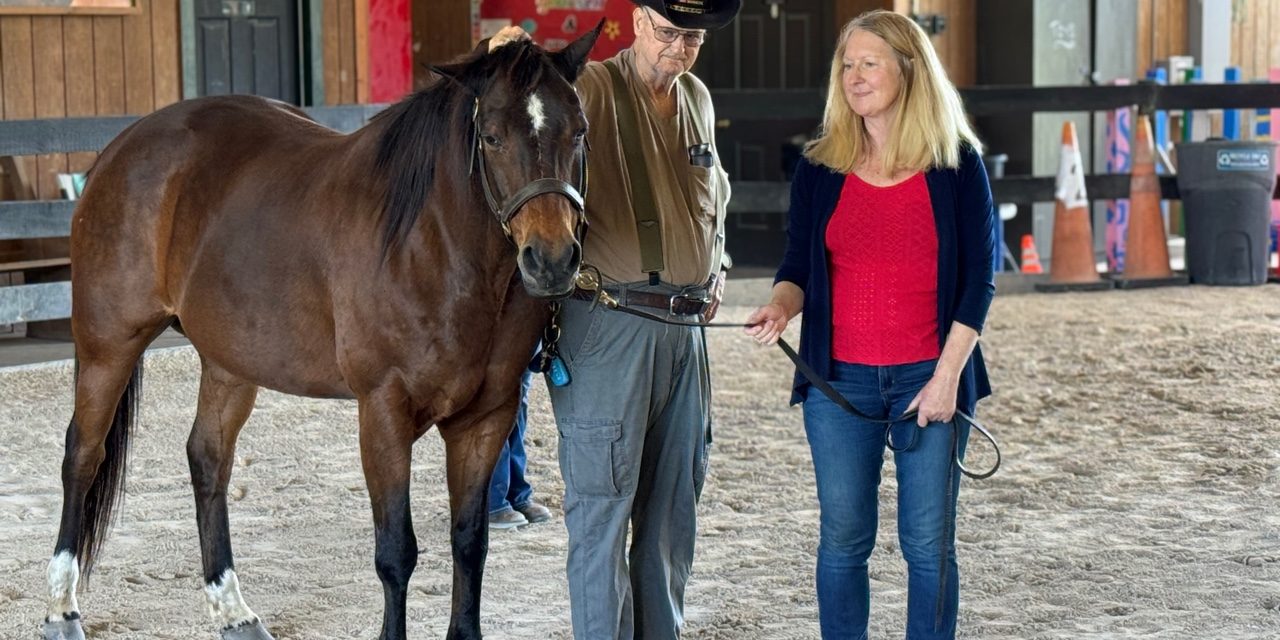By Tina Peratino
This month’s blog is written by Tina Peratino, Masterson Method Equine Specialist. In Ocala, Florida, veterans and horses are finding new ways to heal—together. Through the Masterson Method’s gentle Bladder Meridian technique, veterans at the Marion Therapeutic Riding Association discovered how stillness, presence, and trust can release tension and foster calm in both horse and human.
Last month, I had the honor of traveling to Marion Therapeutic Riding Association (MTRA) in Ocala, Florida to lead a Withers and Wellness for Warriors workshop—an experience rooted in slowing down, being present, and offering care not just to people, but to the horses who serve them.
The Veterans Program
MTRA’s Veteran’s Program, Liberty’s Gait, is grounded in the belief that Post-Traumatic Growth is possible, and that veterans deserve more than just coping: they deserve purpose, connection, and renewed joy. Their model for Equine-Assisted Psychotherapy brings together a licensed mental health professional, an Equine Mental Health & Learning Specialist (EMHLS), and a Certified Therapeutic Riding Instructor (CTRI) to create a powerful, trauma-informed support team. With such thoughtful, intentional work, I was deeply grateful to be invited into it.
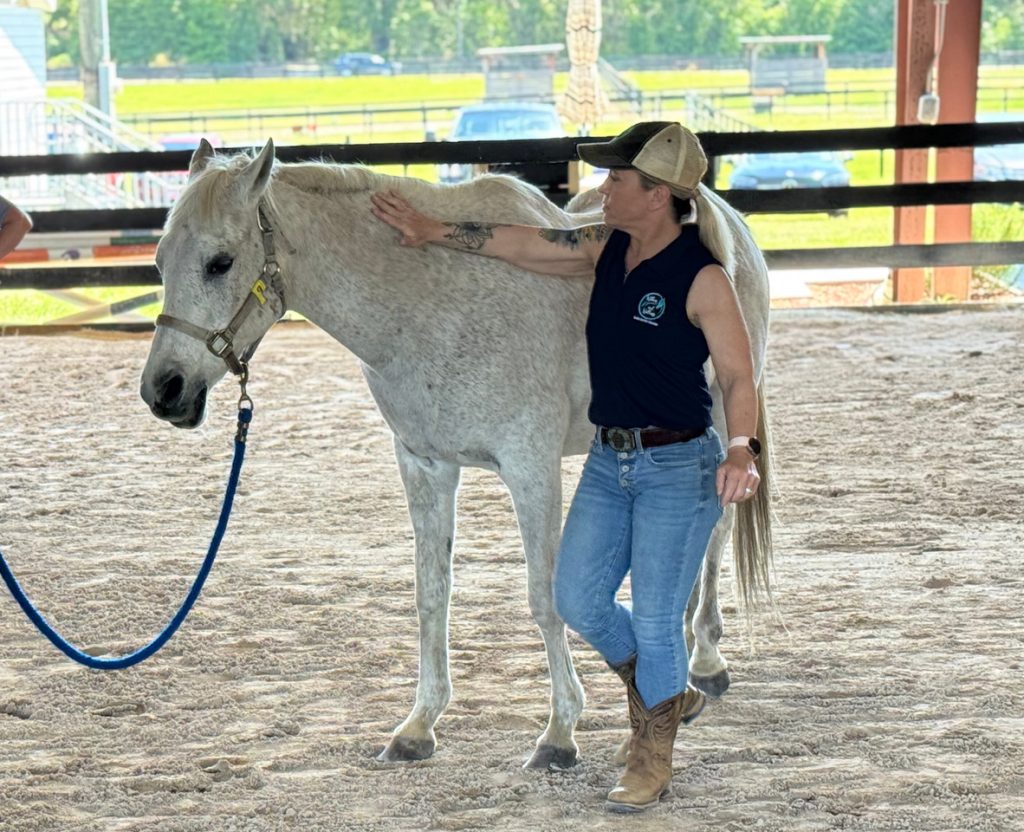
My Role as MMES
As a Masterson Method Equine Specialist (MMES) and trauma-informed equine-assisted coach, I blend experiential coaching and mindfulness to help both horse and human down-regulate, soften, and settle. The focus of this workshop was The Masterson Method Bladder Meridian technique, a light-touch, ground-based approach that invites the horse to be an active participant in releasing tension. The Masterson Method is rooted in patience and presence, often producing subtle responses—like blinking, licking, softening through the poll or hips—and eventually, release. While the method is used by certified practitioners to benefit performance horses, as a certified Masterson Method Equine Specialist, I learned how to use the most basic technique as an equine-assisted learning activity to benefit EAS horses as well.
How the Day Went
The morning began with introductions, breathwork, and a quiet explanation of what we’d be doing. Then, each veteran was paired with a horse, most who have been working together for a significant period of time and were invited to explore the technique at their own pace. No one had to “perform” or get it right. The invitation was simply to be still, listen with their heart and hands, and allow the horse to guide the process.
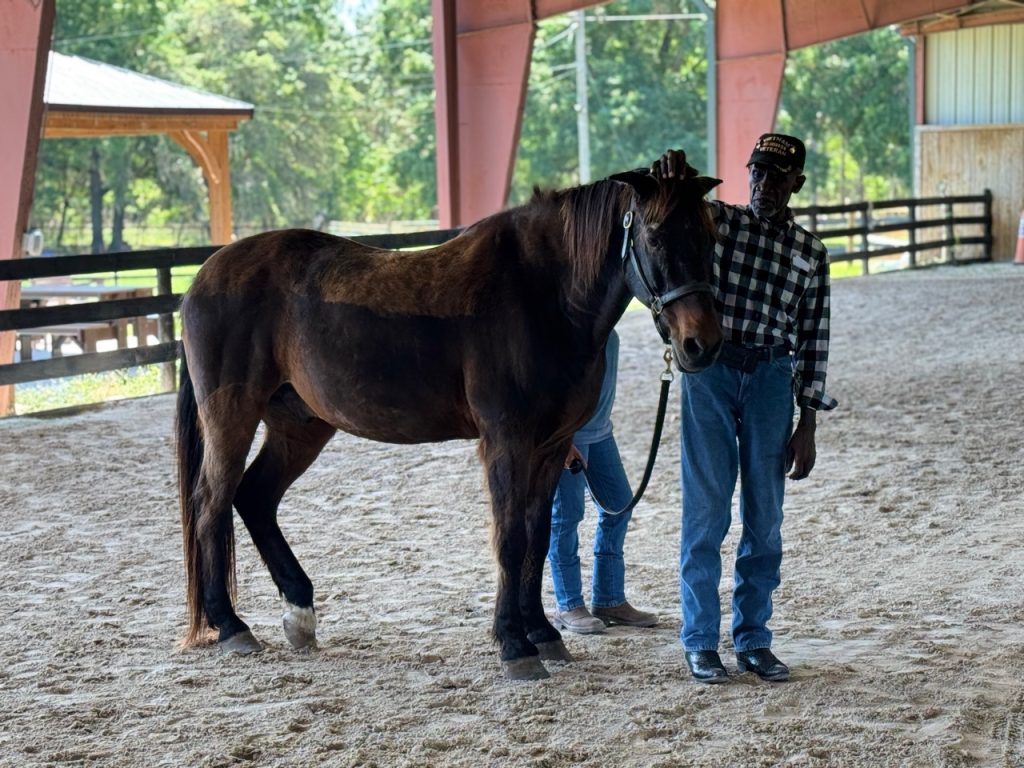
Watching the interactions unfold was powerful. Some horses responded immediately. Others took time to settle, but eventually let down—through yawns, licks/chews, shifts of weight, and deep exhales. We saw participants start to mirror that experiential shift too. Shoulders dropped. Breathing slowed. The energy in the arena softened.
What People Shared
Doug Walker, U.S. Veteran and Equine Mental Health Specialist (EMHLS) at MTRA, reflected on the experience:
“At first meeting it felt like Tina and I were old friends. She exuded a sense of welcoming charm and genuine concern for Veterans and the herd at MTRA. I was circumspect regarding a method of interaction with horses that did not solely rely on touch. However, the results were undeniable with visible evidence of stress releases in all the herd. I have thought a great deal about the results that I witnessed and believe that horses sense our presence and moreover our undivided attention to their well-being. Upon further reflection [I believe] that just like humans enjoy the presence of another who is focused on sharing and caring about us, so it must be with our herd.”
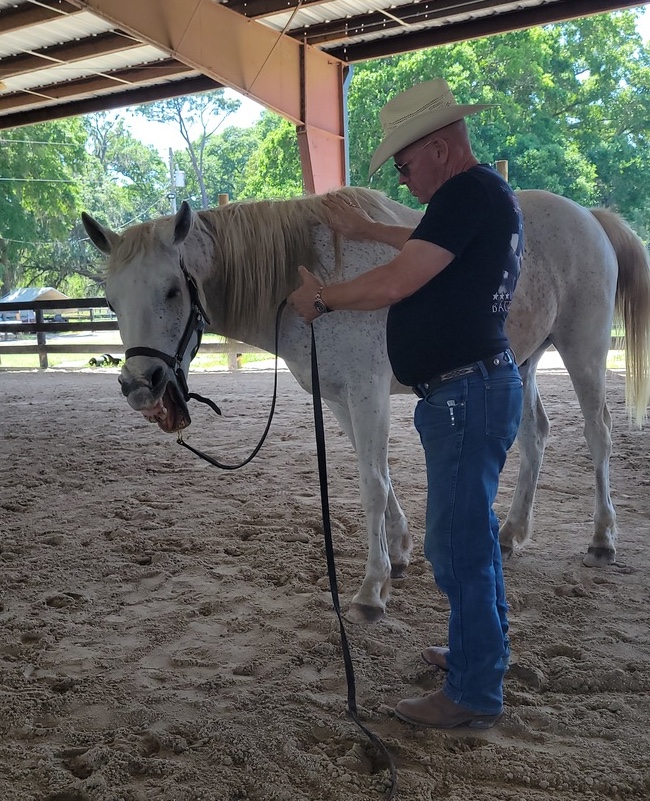
One of the participants, Kira, who worked with her partner horse, Spencer, shared this reflection after the workshop:
“Tina was so kind-hearted, compassionate, and aware of her audience—it made me feel accepted, valued, and appreciated. During the session, she explained everything with patience and depth, meeting each of us where we were. I learned how to connect with a horse simply by being present, calm, and alert. Her attentiveness and attention to detail helped the group feel at ease and created a comfortable, supportive environment. The open-floor discussion afterward gave us a chance to freely reflect on what we learned. It was an unforgettable experience.”
Wrapping It Up
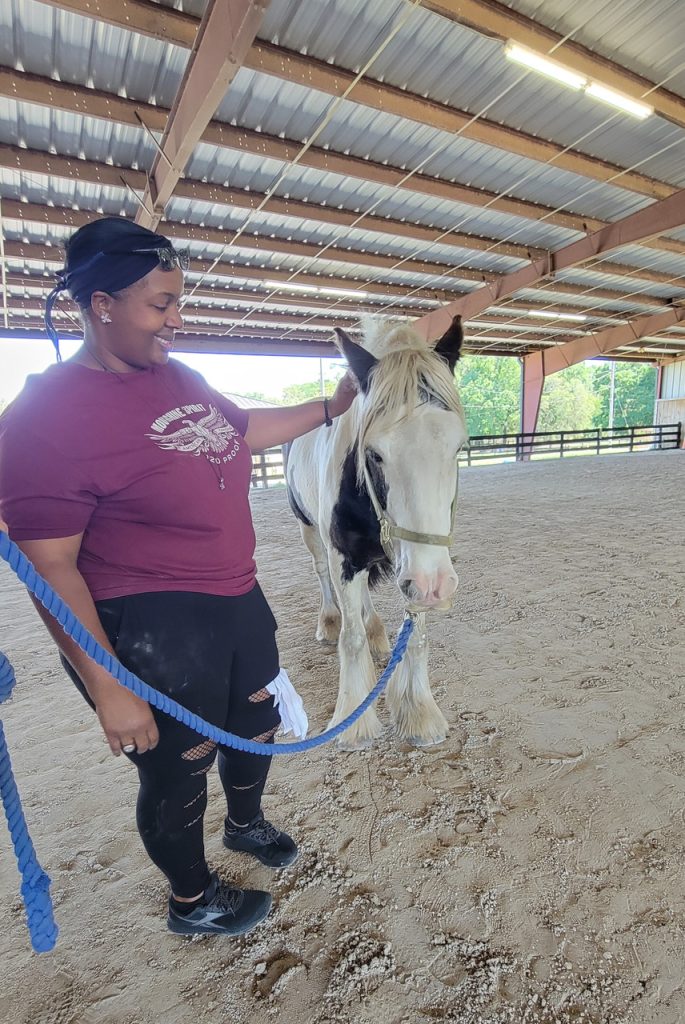
We ended with a casual chat, sharing takeaways and small insights. For many, it was the first time they’d experienced what it felt like to be fully present without having to talk through it. No expectations, just breath, connection, and stillness.
Catherine Sears, Executive Director at MTRA, reflected on the impact for both the horses and the humans:
“Tina’s intuitiveness and grace with our horses during the Masterson Method session were truly admirable. She brought a sense of peace to both the horses and the veterans she was teaching. We saw excellent, lasting results in all our horses throughout the day. It was a special experience—pampering our horses and learning new skills together.”
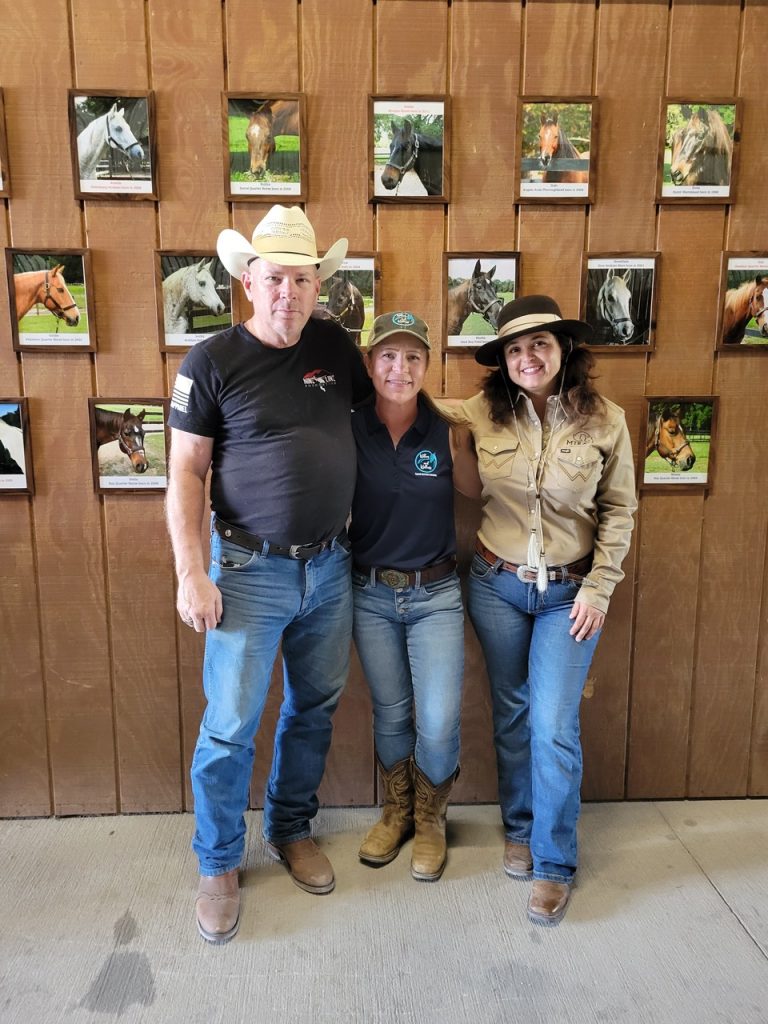
My Takeaways
That line—pampering our horses and learning together—stuck with me. So often the horses give and give. Especially those in equine-assisted services (EAS). They show up for trauma, grief, anxiety, anger—and they hold it all without words. This technique is a way of giving something back. A way to say: I see you. I’m here with you. You can let go now, too.
This workshop wasn’t about fixing anything. I focused on holding space—for release, for connection, and for a kind of quiet healing that doesn’t need to be spoken to be felt.
If I’ve learned anything from this work, it’s that healing often lives in the pause. In the breath, in the blink, in the softening, and in the silent language that horses speak fluently and freely—if we’re willing to listen.
Tina Peratino, MMES, is the founder of Withers and Wellness, LLC in Maryland. As a certified Masterson Method Equine Specialist, Tina offers sessions for equine-assisted services (EAS) programs where participants can learn the Bladder Meridian technique as a simple yet profound method for giving back to and connecting with our EAS horses. At Withers and Wellness, she creates a space where horses and humans can grow, heal, and thrive together.
If you’d like to learn more about becoming certified as a Masterson Method Equine Specialist, visit our MMES Program page.
